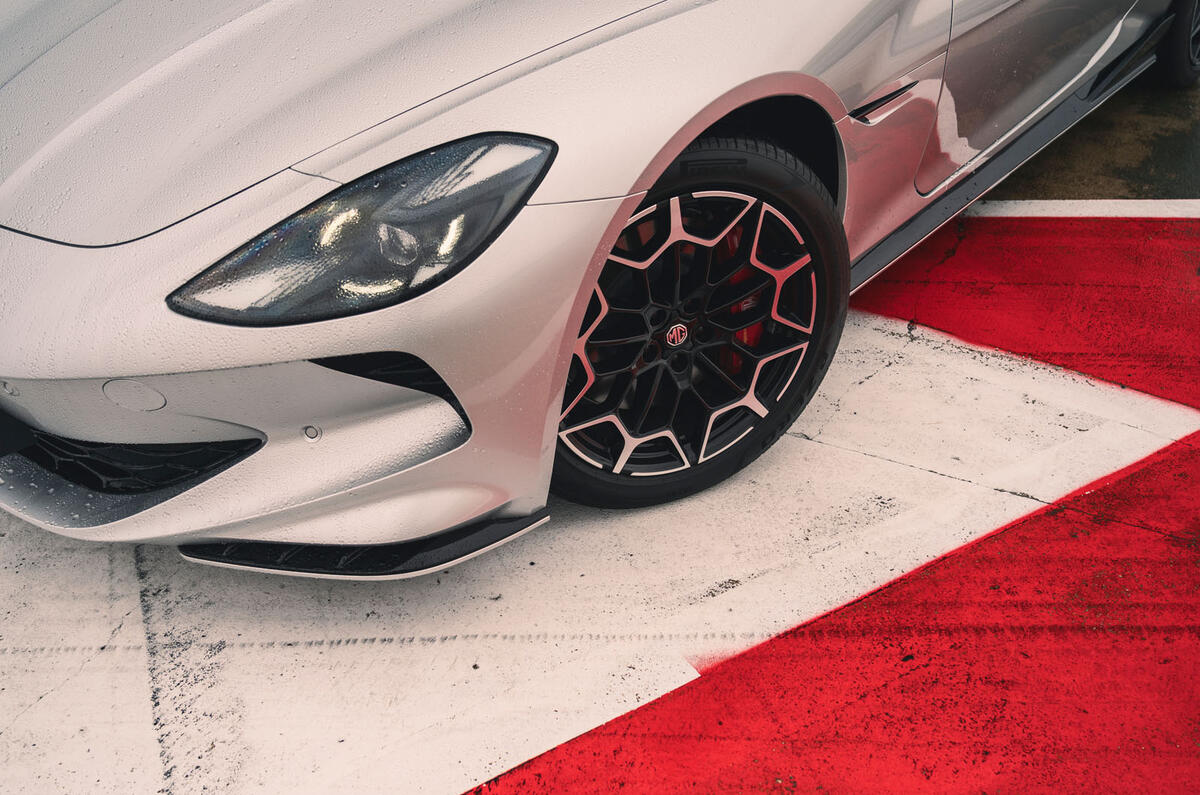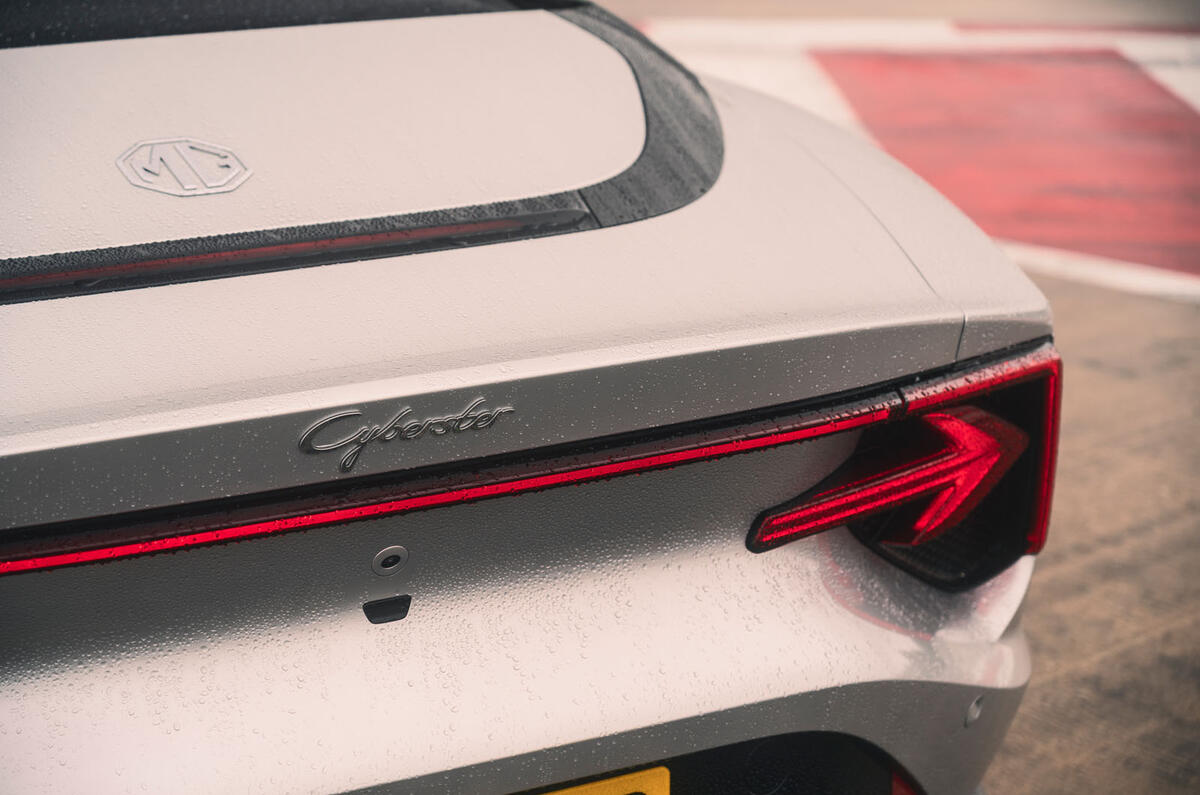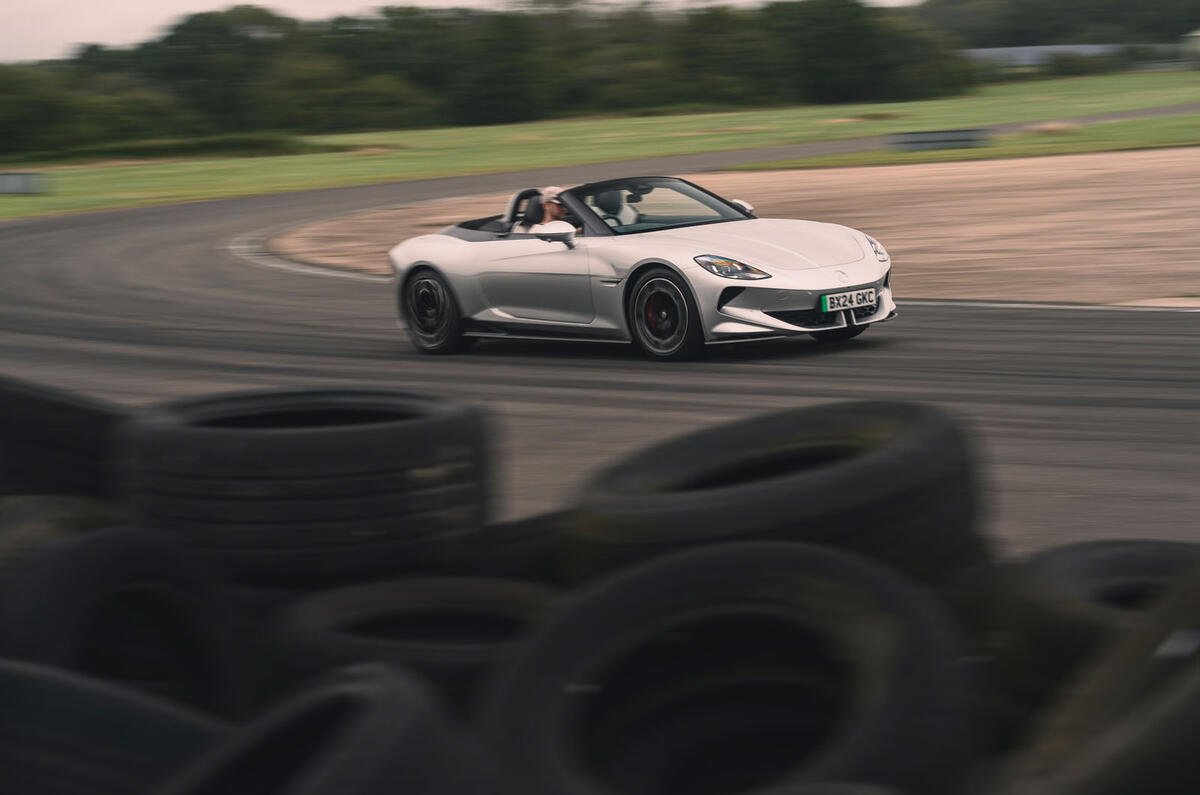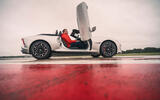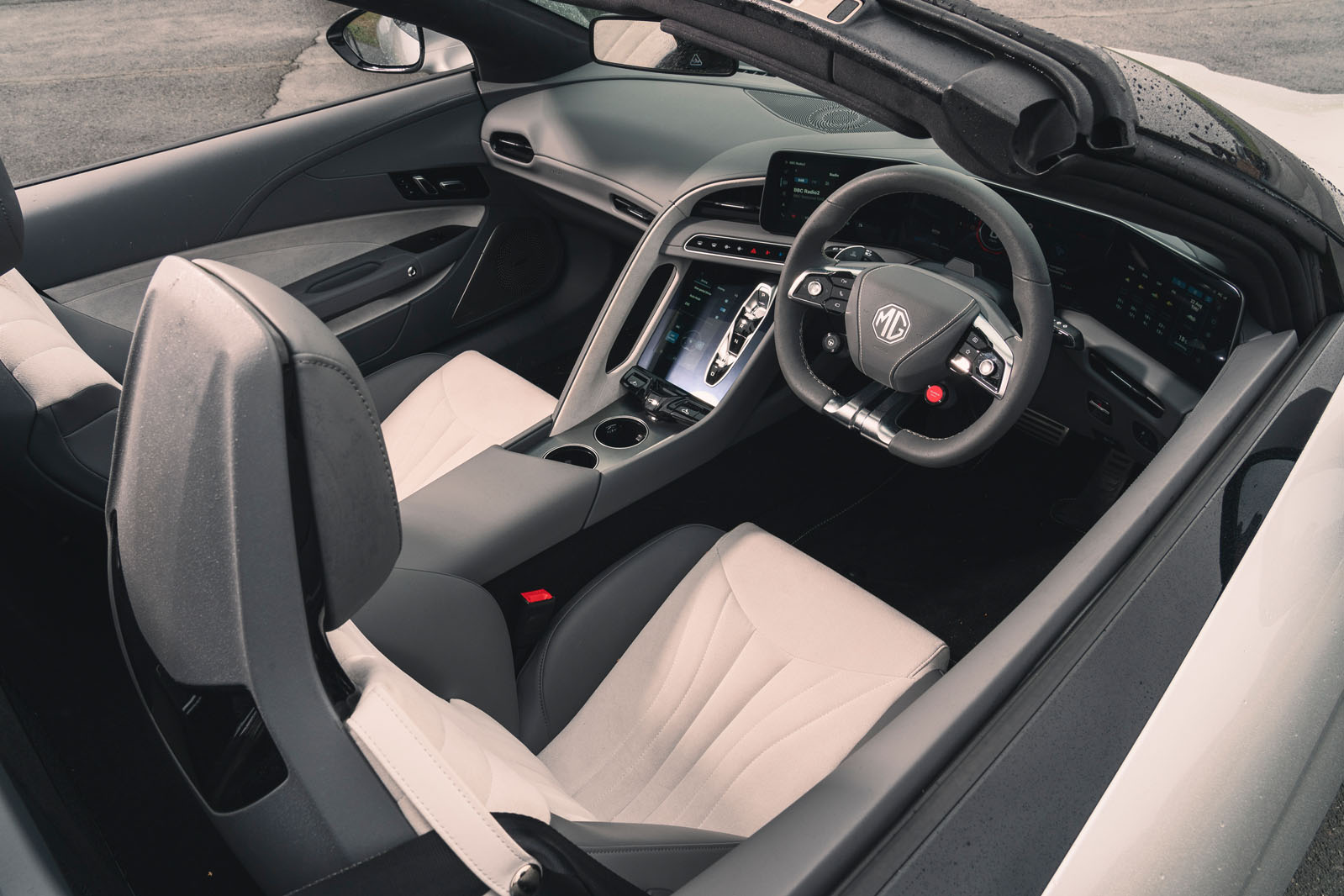One of the things that MG Motor's Longbridge engineering team fought hard for on this car, they say, was a low driving position. Would they have fought that little bit harder.
The car's driving position is otherwise good, and its standard for material quality is surprisingly high for something competing with Alpines and lower-end Porsche Boxsters. But driver tallers will feel like they're sitting two or three inches higher at the steering wheel than they'd ideally like to, and are therefore left more exposed to wind buffeting with the roof down than they really ought to be.
Those UK-based engineers did succeed in adding an adjustable lumbar support for the driver's seat, however; in creating a one-pedal driving mode for the car; in fitting a rear wind deflector; and in carving out a few more valuable litres in the boot such that golf clubs could fit inside.
Better still, they adapted UK-market cars for British tastes, making the digital screens ‘less animated’ and distracting than they were, improving their usability, creating a more ‘sophisticated’ pedestrian warning noise (Chinese cars sound like they’re playing a song), and adding in a surprisingly likeable fake engine noise that seems to combine a distant four-pot with a space laser (only when you floor it; otherwise you’re free to indulge in your music through the banging Bose stereo, or enjoy the singing of the birds).
You can't help wishing the car's several digital display screens were less important, however. On the centre console is a smartphone-esque touchscreen for adjusting the many, many vehicle settings and the climate (there are also haptic icons for adjusting the fan speed and heat above it), while the digital instrument display is flanked by two small touchscreens, the left-hand one for your media and sat-nav, and the right-hand one for various other things.
Quite apart from wondering why anyone needs to see next week’s weather forecast while driving, or a pie chart of what exactly has been consuming energy within the car, and being alarmed that the system won’t prevent you from typing in your email to log into MG’s website while doing 70mph, there’s the issue that the steering wheel, no matter how high or low you position it, can block significant portions of the flanking screens. The severity of the problem depends a little on the height of the driver - but having to crane your neck at least a little on a dismayingly frequent number of occasions just to see your navigation map or trip computer data is annoying however tall you are.
Praise must go to the comfort and support of the car's faux-leather bucket seats, which keep you comfortable over distance rather well. But sitting just another few inches lower would make things much better all round, as there’s still the feeling of being perched atop the battery, rather than cocooned within the car.






